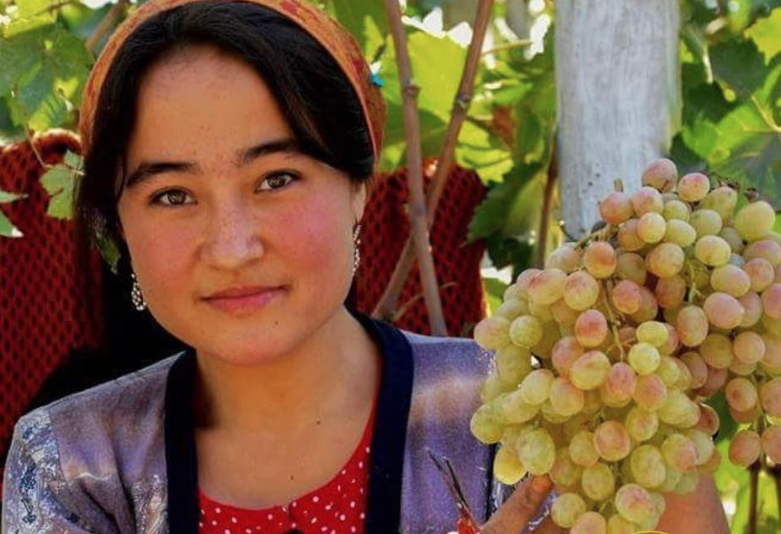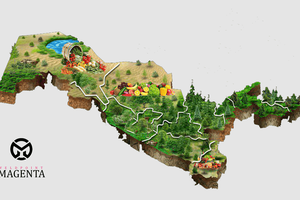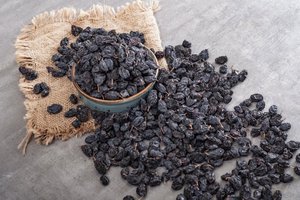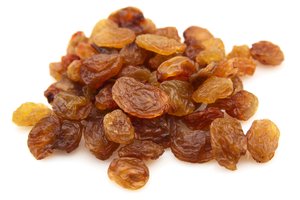Findings:
- Grape cultivation constitutes an average of 84.1% of household income, and 91.2% in large farms.
- Families with larger landholdings can afford more expenditures on education, transportation, and clothing.
- Average grape yield: 21.7 tons/ha, which is twice the national average.
- Prominent grape varieties: Kishmish, Khusayni, Rizamat, Damskiy Palchik.
- Key challenges encountered: infrastructure deficiencies, pests, water scarcity, low prices for grapes and raisins, difficulties in market access.
Conclusion and Recommendations:
- Grape production can play a key role in reducing rural poverty.
- The state needs to provide support in water infrastructure, agricultural education, and marketing channels.
1. INTRODUCTION
In today's world, the sustainability of rural development is directly linked to the diversification of agricultural production and the enhancement of its productivity. Particularly in developing countries, the production activities of small-scale farmers serve as the foundational pillar for both food security and household income. In this context, grape production holds a significant place both as fresh fruit and in the category of dried foods. Grape, with its nutritional value and economic potential, is a strategic product that directly affects not only consumer demand but also producer welfare. A recent field study conducted in the Samarkand region of Uzbekistan reveals that small-scale grape producers derive an average of 84% of their income from viticulture activities. This clearly demonstrates the strong impact of grapes on rural welfare. Furthermore, the transformation of grapes into dried form as raisins creates value-added dried foods, which constitute important income items in domestic and international markets. At this point, food processing technologies increase efficiency, preserve quality, and strengthen export potential. Similarly, the evaluation of other fruit types such as apricots and figs in a similar manner has become a focal point of rural development policies. In this article, while examining the effects of grape production on rural income through the example of Uzbekistan, concepts such as dried foods, food processing technologies, and value-added agricultural production will also be discussed in detail.
2. ECONOMIC CONTRIBUTIONS OF GRAPE PRODUCTION
Grape is a product with high economic value in agricultural production, both in its fresh and processed (e.g., raisin) forms. Uzbekistan, among Central Asian countries, stands out with its annual grape production exceeding 1.3 million tons. The Samarkand region of the country has special potential for viticulture due to its climate conditions, soil structure, and local grape variety diversity. According to the field research, small-scale dehkan farmers operating in the Samarkand region meet approximately 84% of their family budgets with income from grapes. This rate rises to 91.2% for farmers with larger landholdings. This situation highlights the fundamental role of grape production in increasing rural income. Moreover, this production model is not limited to grapes alone; it is supported by dried foods such as raisins, apricots, and plums, thereby increasing income diversity. Particularly in households engaged in grape production, producer incomes rise due to the value added from drying and packaging the product. The proliferation of food processing facilities, modernization of drying technologies, and increased market access accelerate this process. In this regard, food processing technologies enhance not only production capacity but also quality and exportability. A comparative examination of grape production policies in countries like Turkey, Iran, and Uzbekistan reveals both common points and different strategies. In Turkey, grape production is largely concentrated in Manisa and its surroundings, while in Uzbekistan, it is spread across regions like Samarkand and the Fergana Valley. The dried foods sector is strong in both countries; however, infrastructure deficiencies and marketing issues in Uzbekistan limit producer income. In conclusion, grape production and processing are of strategic importance not only for food production but also for rural development, food security, and socio-economic welfare. Supporting farmers in the production process, investing in the dried foods sector, and disseminating food processing technologies will be critical steps for the future of the rural economy.
3. DRIED FOODS AND VALUE ADDITION
One of the most effective ways to create value addition in rural economies is by processing agricultural products into dried foods. Fruits like grapes and apricots, with their structures suitable for drying, possess long shelf life, high export potential, and sustainable income-generating characteristics. Raisins are one of the most striking examples of this transformation. When evaluated specifically for Uzbekistan, food processing technologies unfortunately still have limited capacity. Therefore, many dehkan farmers are forced to sell their grapes fresh at low prices. However, with appropriate infrastructure and technological support, the same product gains value addition when dried and finds buyers at higher prices in the market. For example, one kilogram of fresh grapes sells for 2-3 dollars in the local market, while high-quality dried and packaged raisins can reach 5-8 dollars. This difference directly reflects on the farmer's income. In addition, fruits like apricots, figs, apples, and plums can be transformed into a similar economic model through drying. In this context, increasing diversity in agricultural products both reduces income fluctuations and adapts to domestic and international market demands. Particularly, marketing dried apricots, which have high antioxidant value, increases export potential with the rise of health trends. Food processing technologies go beyond traditional methods by improving production quality and reliability with modern equipment, controlled drying systems, and hygienic packaging solutions. These technologies are not exclusive to large industrial facilities; they can be made applicable locally through rural cooperatives, micro-enterprises, and farmer unions. Community-based drying workshops that include women producers, in particular, offer a strong model for both economic and social development. In conclusion, the dried foods sector provides a robust value chain for both domestic consumption and export through the processing of grapes, apricots, and similar fruits. Strengthening this chain not only increases producer income but also provides multidimensional benefits such as reducing food waste, extending shelf life, and supporting industrial formation in rural areas.
4. CHALLENGES ENCOUNTERED AND SOLUTION RECOMMENDATIONS
Despite its great potential, grape production and the associated dried foods sector face many structural challenges. As in the case of Uzbekistan, small-scale producers (dehkans) encounter various obstacles in utilizing these opportunities. These issues directly affect not only production efficiency but also farmers' income and quality of life. 🟠 1. Infrastructure Deficiencies A large portion of the producers participating in the research complain about the inadequacy of irrigation, electricity, and transportation infrastructure in the grape production process. Particularly, the lack of modern irrigation systems causes water scarcity and yield loss in summer months. Additionally, the absence of drying and storage infrastructure leads to quality loss in products like dried grapes and apricots. 🟠 2. Market Access Issues Most producers are forced to sell their products to traders at low prices. The weakness of cooperative structures increases intermediaries between producers and consumers, reducing the farmer's profit margin. Furthermore, logistic and documentation processes are quite complex and costly for producers aiming to access foreign markets. 🟠 3. Insufficient Access to Food Processing Technologies Modern food processing technologies improve both the quality of products like grapes and apricots and their preservability for longer periods. However, access to these technologies is limited in rural areas. Small farmers have almost no access to drying machines, hygienic packaging systems, and quality control laboratories. 🟠 4. Lack of Education and Knowledge The transition to innovative methods in agriculture depends on knowledge and education infrastructure. Serious knowledge gaps are observed among small producers in Uzbekistan regarding modern farming techniques, efficient irrigation methods, and pest and disease control. This reduces efficiency and negatively affects product quality. ✅ Recommendations
- State-supported infrastructure investments, especially irrigation systems and rural electricity networks, should be strengthened.
- Rural cooperatives should be encouraged to enable farmers to access markets collectively.
- Access to modern equipment for small producers should be provided through micro-credits and grants for food processing facilities.
- Education programs should be delivered regularly to villages through agricultural engineers and chambers of agriculture, ensuring technology transfer.
5. CONCLUSION AND POLICY RECOMMENDATIONS
Grape production stands out as a high value-added agricultural activity, especially for small-scale farmers living in rural areas. The field study conducted in the Samarkand region of Uzbekistan shows that grape production constitutes more than 84% of household income. This clearly demonstrates that grapes are not merely an agricultural product but also one of the fundamental determinants of rural welfare. However, this potential is not fully utilized due to fundamental problems such as infrastructure deficiencies, insufficient access to food processing technologies, marketing issues, and lack of education. Investing particularly in the dried foods sector will enable farmers to compete not only in the domestic market but also in foreign markets. Dried products like raisins and apricots hold significant export potential with the increasing global demand for healthy foods. The main lessons for policymakers are as follows:
- Developing rural infrastructure should be a priority for increasing production efficiency and product quality.
- Disseminating food processing technologies will ensure that value addition remains in the village and reduce rural-to-urban migration.
- Strengthening education and technical consultancy services will facilitate farmers' adaptation to modern production techniques.
- The cooperative and clustering model offers a strategic solution for market access, price stability, and export success.
In conclusion, grape production should be considered not in isolation but integrated with the dried foods sector and food processing technologies. This holistic approach will both increase producer incomes and contribute to sustainable rural development goals.
📚 References
- Mamasoliev, S., Kawabata, Y., Chitose, A., & Yamada, M. (2022). Impact of grape production on improved family income in Uzbekistan: Case study of small-scale grape producers in the Samarkand region. Journal of Arid Land Studies, 32(S), 267-272. https://doi.org/10.14976/jals.32.S_267
- Asia Farming (2017). Grape Cultivation. http://www.asiafarming.com/grape-cultivation/
- FAO (2013). Grape and raisin production statistics.
- The State Committee of the Republic of Uzbekistan on Statistics (2016).
- Ostonakulov T. E. et al. (2006). Viticulture. Samarkand, Uzbekistan.






